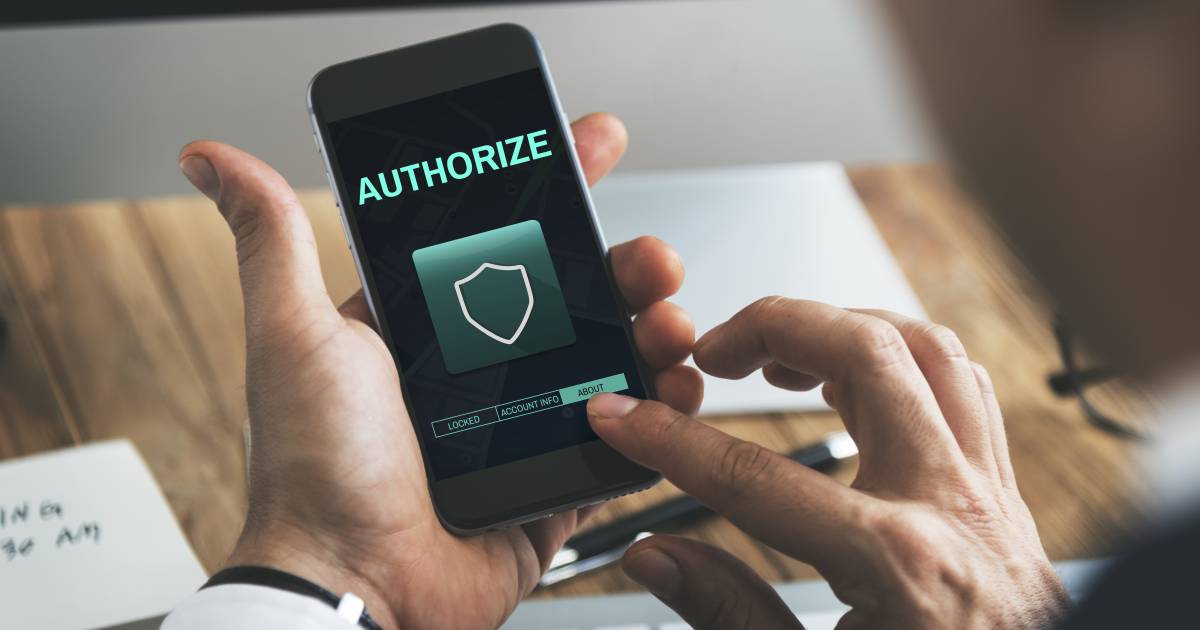Secure Your WordPress Site with Two-Factor Authentication (2FA)

Two-Factor Authentication (or 2FA) serves as a robust security mechanism for online accounts, requiring users to confirm their identity through two distinct factors. . It requires users to provide two different types of identification before granting access to their accounts. This can include something they know (such as a password) and something they have (such as a mobile device or fingerprint).
The importance of 2FA in WordPress site security cannot be overstated. With the increasing number of cyber attacks and data breaches, it is crucial to take proactive steps to protect your website and user data. By implementing 2FA, you can significantly reduce the risk of unauthorized access and protect sensitive information.
The concept of 2FA is not new and has been around for several years. It was first introduced in the 1980s as a way to secure computer systems. However, it has gained more popularity in recent years due to the rise in cybercrime and the need for stronger security measures.
Why 2FA is Important for WordPress Site Security
Statistics on WordPress site hacks paint a grim picture of the current state of website security. According to a report by Sucuri, out of all the hacked websites they analyzed in 2020, 39% were running on WordPress. This highlights the vulnerability of WordPress sites and the need for additional security measures like 2FA.
One of the main ways 2FA can prevent unauthorized access is by adding an extra layer of authentication. This significantly reduces the chances of successful brute force attacks or password guessing.
Implementing 2FA on your WordPress site offers several benefits for site owners. Firstly, it enhances the overall security of your website by making it much harder for hackers to gain unauthorized access. This can help protect sensitive user data, such as personal information or financial details. Secondly, it can help build trust with your users, as they know their accounts are better protected. This can lead to increased user engagement and loyalty.
How 2FA Works to Secure Your WordPress Site
Two-Factor Authentication enhance WordPress website security by requiring users to provide two different types of identification before granting access to their accounts. The first factor is typically something the user knows, such as a password or PIN. The second factor is something the user has, such as a mobile device or security token.
By requiring both factors, 2FA adds an extra layer of security to the authentication process. Even if a hacker manages to obtain a user’s password, they would still need access to their second factor to gain entry. This significantly reduces the chances of successful unauthorized access.
Types of 2FA Available for WordPress Users
There are several types of 2FA available for WordPress users, each with its own advantages and disadvantages.
SMS-based 2FA is one of the most common methods and involves sending a unique code to the user’s mobile device via SMS. The user then enters this code along with their password during login. While this method is convenient and widely supported, it does have some drawbacks. It relies on the user having a mobile device and a stable cellular connection. It is also susceptible to SIM swapping attacks, where an attacker tricks the mobile carrier into transferring the user’s phone number to a new SIM card.
App-based 2FA is another popular method that uses a mobile app to generate a unique code. The user installs the app on their device and links it to their WordPress account. During login, the app generates a code that the user enters along with their password. This method is more secure than SMS-based 2FA as it is not susceptible to SIM swapping attacks. However, it does require the user to have a compatible device and install the app.
Hardware-based 2FA involves using a physical device, such as a USB key or smart card, to authenticate the user. The user inserts the device into their computer during login, and it generates a unique code that they enter along with their password. This method is highly secure as it requires physical possession of the device. However, it can be less convenient as it requires carrying around an additional item.
Biometric-based 2FA uses unique physical characteristics, such as fingerprints or facial recognition, to verify the user’s identity. This method is becoming more popular with the widespread adoption of biometric technology in smartphones and other devices. It offers a high level of security and convenience, as users do not need to remember passwords or carry around additional devices. However, it does require compatible hardware and may raise privacy concerns for some users.
Setting Up 2FA for Your WordPress Site
Setting up 2FA for your WordPress site is relatively straightforward and can be done in a few simple steps.
1. Choose a 2FA plugin
There are several plugins available that can help you implement 2FA on your WordPress site. Some popular options include Google Authenticator, Duo Two-Factor Authentication, and Authy Two-Factor Authentication.
2. Install and activate the plugin
Once you have chosen a 2FA plugin, install and activate it on your WordPress site. This can usually be done through the WordPress dashboard by navigating to the “Plugins” section.
3. Configure the plugin settings:
After activating the plugin, you will need to configure its settings. This typically involves enabling 2FA for specific user roles or individual users. You may also have the option to choose the type of 2FA method you want to use.
4. Educate your users:
It is important to educate your users about the benefits of 2FA and how to set it up on their accounts. Provide clear instructions and resources to help them enable 2FA and troubleshoot any issues they may encounter.
5. Test and evaluate:
Once 2FA is enabled, it is important to test and evaluate its effectiveness. Ensure that users are able to successfully log in using their second factor and monitor any potential issues or vulnerabilities.
Choosing the Right 2FA Method for Your WordPress Site
When choosing a 2FA method for your WordPress site, there are several factors to consider.
1. Security:
The primary goal of implementing 2FA is to enhance the security of your WordPress site. Consider the level of security offered by each method and choose one that aligns with your needs and risk tolerance.
2. Convenience:
While security is important, it is also crucial to consider the convenience factor for both you and your users. Choose a method that is easy to use and does not create unnecessary barriers or frustrations.
3. Compatibility:
Ensure that the 2FA method you choose is compatible with your WordPress site and any other systems or plugins you may be using. Check for compatibility issues or limitations before implementing.
4. User experience:
Consider the user experience when choosing a 2FA method. Some methods may be more intuitive or user-friendly than others, which can impact user adoption and satisfaction.
5. Cost:
Some 2FA methods may require additional hardware or software, which can incur additional costs. Consider your budget and the cost-effectiveness of each method before making a decision.
It is also important to test and evaluate different 2FA methods before implementing them on your WordPress site. This can help you identify any potential issues or limitations and ensure that the chosen method meets your security requirements.
Best Practices for Using 2FA on Your WordPress Site
Implementing 2FA on your WordPress site is just the first step. To maximize its effectiveness, it is important to follow best practices for using 2FA.
1. Educate users:
Provide clear instructions and resources to help users understand the benefits of 2FA and how to set it up on their accounts. Regularly communicate the importance of 2FA and remind users to enable it if they haven’t already.
2. Enforce 2FA:
Consider enforcing 2FA for all users, especially those with administrative privileges or access to sensitive information. This can help ensure that all accounts are protected by an extra layer of security.
3. Monitor and manage:
Regularly monitor and manage 2FA on your WordPress site to ensure its effectiveness. Keep track of user adoption rates, troubleshoot any issues, and update your security measures as needed.
4. Regularly update plugins:
Keep your 2FA plugin and other security plugins up to date to ensure they are providing the latest security features and patches. Regularly check for updates and install them as soon as they become available.
5. Backup your site:
Implement regular backups of your WordPress site to protect against data loss or corruption. In the event of a security breach or other issue, having a recent backup can help you quickly restore your site to a previous state.
Troubleshooting Common Issues with 2FA on WordPress
While 2FA can greatly enhance the security of your WordPress site, it is not without its challenges. Here are some common issues that users may encounter with 2FA on WordPress and how to troubleshoot them.
1. Incorrect codes:
Users may enter incorrect codes during the 2FA process, resulting in failed login attempts. Ensure that users are entering the correct codes and provide clear instructions on how to generate and enter them.
2. Lost or stolen devices:
If a user’s second factor device is lost or stolen, they may be unable to access their account. Provide instructions on how to disable 2FA temporarily and regain access to their account.
3. Compatibility issues:
Some 2FA methods may not be compatible with certain devices or browsers. Ensure that users are using compatible devices and browsers and provide alternative methods if necessary.
4. User resistance:
Some users may be resistant to enabling 2FA due to perceived inconvenience or lack of understanding. Educate users on the benefits of 2FA and address any concerns or misconceptions they may have.
5. Plugin conflicts:
In some cases, 2FA plugins may conflict with other plugins or themes installed on your WordPress site. Test for compatibility issues before implementing 2FA and troubleshoot any conflicts that arise.
Integrating 2FA with Other WordPress Security Measures
While 2FA is an effective security measure on its own, it can be even more powerful when integrated with other security measures on your WordPress site.
One way to integrate 2FA with other security measures is by using a comprehensive security plugin that includes multiple features, such as firewall protection, malware scanning, and login lockdown. These plugins often have built-in support for 2FA and can help you manage all aspects of your site’s security in one place.
Another way to integrate 2FA is by using a web application firewall (WAF) that includes support for 2FA. A WAF can help protect your site from malicious traffic and attacks, while 2FA adds an extra layer of authentication for users.
Additionally, you can integrate 2FA with other security plugins or services that provide features such as login monitoring, user activity tracking, and IP blocking. By combining these measures, you can create a comprehensive security plan for your WordPress site that covers all aspects of protection.
Join Our Newsletter
Stay up to date on the latest WordPress tips and news



